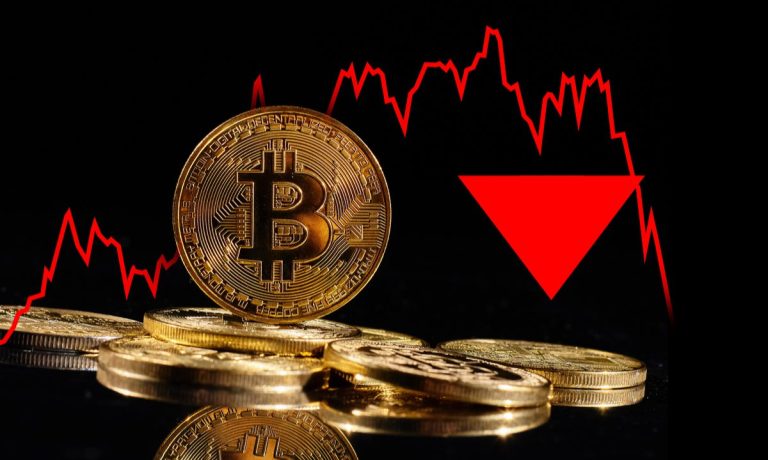
Bitcoin has transformed from a cryptocurrency into a store of value on par with gold as an inflation hedge. So said Wall Street and institutional investors diving into BTC and the broader crypto market in 2021 — Gold 2.0. It’s a narrative many in the crypto world did and do believe.
So why is bitcoin tanking despite the Federal Reserve signaling a trio of rate hikes this year to fight inflation?
And what does it mean for arguments made by bitcoin supporters like Block (formerly Square) payments firm CEO Jack Dorsey, who’s argued that bitcoin will replace the dollar?
Trimming the Hedge
As far as bitcoin’s hedging role, inflation hit 7% in December, its highest level in 40 years and up from 1.4% in January 2021. That means, by the store of value narrative, bitcoin should be doing well. Besides, the stock market has been tumbling — the Dow is down more than 5% this year — and the political situation in the U.S. has been just as rocky. And now tensions with Russia over a possible invasion of Ukraine are stirring international fears.
And yet, bitcoin started December at $56,477 and ended the year at $47,686 — and it dropped below $38,000 Friday morning (Jan. 21). That’s down 44% from its Nov. 10 all-time high of $68,789.
“Cryptocurrencies are no longer an isolated risk asset and are responding to changes in global policy,” Clara Medalie, research director at digital asset data provider Kaiko, told Barron’s last week. “It’s not surprising that both will start to become more volatile as the liquidity taps turn off.”
The International Monetary Fund (IMF) said much the same thing in a Jan. 14 blog post, explaining “crypto assets … showed little correlation with major stock indices” before the pandemic, when “they were thought to help diversify risk and act as a hedge against swings in other asset classes.”
However, the IMF said, the “stronger correlations” with traditional equities markets “suggest that bitcoin has been acting as a risky asset.”
Notably, it added, bitcoin’s “correlation with stocks has turned higher than that between stocks and other assets such as gold, investment grade bonds, and major currencies.”
That makes its value as a risk diversification tool substantially less than was thought, the IMF added.
And it’s not just bitcoin. As the broader cryptocurrency market tanked alongside bitcoin Friday, CoinDesk, argued that the “developing narrative” of ether and other altcoins “decoupling from bitcoin in an adverse macro environment went up in smoke on Friday as a sell-off in stocks and the largest cryptocurrency caused extensive damage to the broader crypto market.”
Growing in Lockstep
So how does this affect payments specifically? Well, for one thing, if bitcoin and other cryptocurrencies’ usefulness as a payments tool must contend not only with their staggering price volatility — 5% to 10% in a day is common — but also marching in lockstep with inflation, what’s the point?
Dollar-pegged stablecoins share all the aspects that supporters argue make cryptocurrencies a useful payments tool — notably very fast and very cheap payments settlement, particularly internationally.
But stablecoins have their own Achilles’ heels, as was pointed out at the Senate Banking Committee’s recent hearing on the subject. Aside from questions about anti-money laundering (AML) compliance, stablecoins’ value rests almost entirely in users’ belief that they are actually backed one-to-one by a basket of dollars and highly liquid investments like short-term treasuries.
That has been tested recently, most notably by the largest and oldest stablecoin-issuer, Tether, which was found to have just 2.9% of its reserves in dollars and nearly half in commercial paper — short-term corporate debt.
Read more: What Senate Banking Committee Chair Sherrod Brown Should Be Asking Tether
Then there are central bank digital currencies (CBDCs) in the wings. China’s digital yuan is about to launch, but a digital dollar is years off. Still, as the Federal Reserve noted in a long-awaited stablecoin report released Thursday (Jan. 20), a digital dollar would be backed by the full faith and credit of the United States, not a basket of fiat currency that may or may not even exist.
See more: Fed’s Digital Dollar Report Finally Drops, With More Questions Than Answers
Finally, there are questions about why a CBDC is necessary as alternative payment rails are being created that deal with one of the biggest failings of the existing payments system — speed. The Federal Reserve’s FedNow instant payments system is working on engaging financial institutions (FIs).
Read more: The Federal Reserve Debuts Website, Tools in Advance of FedNow, Instant Payments Launch
Then there’s the RTP network, The Clearing House’s real-time payments platform open to all Federal Deposit Insurance Corporation (FDIC)-insured depository institutions.
See more: How Consumers Are Driving Demand for Real-Time Payments
It’s worth remembering that other than bitcoin and a few currency-replacement cryptocurrencies, most altcoin cryptocurrencies are not designed as investments, but as utility tokens that power blockchain-based decentralized applications (DApps) running everything from decentralized finance (DeFi) to real-time supply chain management tools.